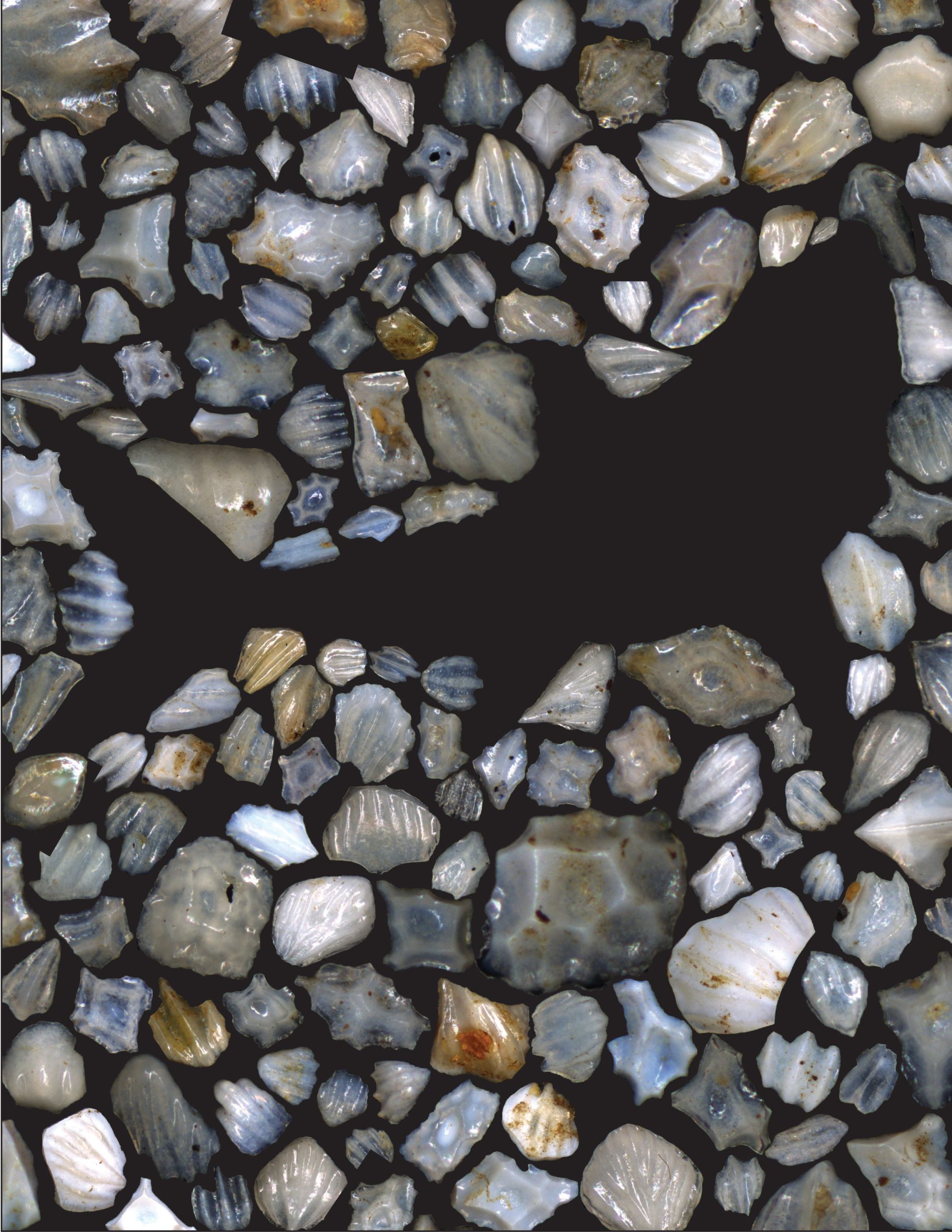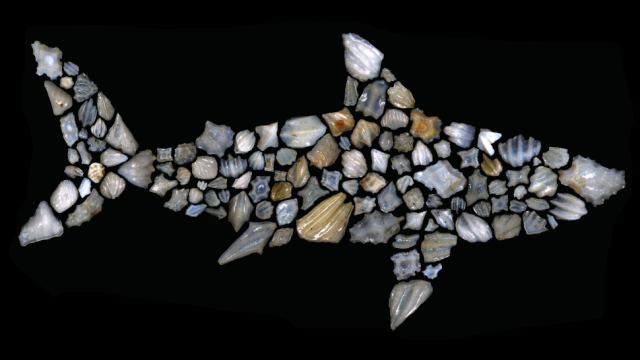Scientists have stumbled upon a previously unknown extinction event that decimated ocean shark populations 19 million years ago. The cause of this sudden die-off, in which global shark populations plummeted by 90%, is a complete mystery.
The previously unidentified extinction event, as described in a Science paper published today, was discovered by accident. Elizabeth Sibert, the first author of the study and a postdoctoral fellow from the Yale Institute for Biospheric Sciences at Yale University, detected evidence of the extinction event while studying fossilized fish teeth and shark scales. Sibert was seeking to learn more about these mysterious bits and pieces, collectively known as ichthyoliths, so she, along with co-author Leah Rubin, a student at the College of the Atlantic at the time of the research, embarked on a project to track shark populations across tens of millions of years.
The data showed that ocean sharks experienced a dramatic decline in both population size and species diversity 19 million years ago — a period not associated with any rapid or tumultuous environmental event. Sibert, who worked as a junior fellow at Harvard University during the initial phases of this research, said “we weren’t expecting to find any change in the shark community, much less a huge extinction,” as she explained in an email.
But the numbers are striking. Over the course of around 100,000 years, sharks nearly dropped off the face of the planet. Microfossil evidence suggests a decrease in abundance by more than 90% and a decrease in species diversity of around 70%. Near shore species tended to survive, but migratory, ocean-going sharks were nearly obliterated. The mass extinction was sudden rather than gradual, hinting at an unknown killing process. Importantly, sharks as a whole have never fully recovered from this extinction event — not even to this day. The current population, across all species, represents a tiny fraction of its former glory.
Rubin, an incoming doctoral student at the State University of New York College of Environmental Science and Forestry, said the key finding of the new study is that “shark ecology” experienced a “widespread extinction that reorganized their communities, in an apparent global manner, in the early Miocene,” a period that lasted from about 16 million to 20 million years ago, she explained in an email.
For the study, Sibert and Rubin were limited to working with ichthyoliths, as traditional, full-scale fossils are practically non-existent in the deep ocean. Along with bits of shark teeth, the scientists studied dermal denticles — tiny v-shaped scales more similar to teeth than they are to fish scales. Dermal denticles provide an “incredible window into the past of these ancient and elusive marine predators and thus the state of ocean ecosystems through time,” said Rubin.

The microfossils were packed within drill cores sourced from the Deep Sea Drilling Project and Ocean Drilling Program, in which sediment samples were taken from the South Pacific gyre and North Pacific gyre, respectively. This collaborative international project is known as the International Ocean Discovery Program, and it has collected sediment from the ocean floor for nearly 50 years.
“I was able to request access to these sediments and carefully look at them under a microscope, looking for tiny fish and shark fossils, each less than half a millimetre in size,” said Sibert. “We looked for changes in the abundance and diversity of the ichthyolith fossils — and that’s how we found this extinction.”
These drill sites in the Pacific ocean were ideal, as they offered a relatively undisturbed snapshot of marine life across vast timescales; the samples allowed the researchers to construct a record of shark population and diversity across the past 40 million years. By studying the overall shape and the structure of the patterns of ridges on the denticles, the researchers identified over 80 distinct shark “morphotypes,” or assumed species.
“Ichthyoliths provide an incredibly rich and high-resolution record of shark and fish diversity in the open ocean — but since they are isolated, not attached to any traditional body fossil, we don’t know much about the animals that had those scales and teeth,” said Sibert. “We have this incredible diversity in scale shape, and we can make inferences about shark diversity, but we don’t know exactly what species they came from.”
The researchers made no attempt to rule out juveniles as being distinct morphotypes. This is not currently scientifically possible, and what’s more, juveniles aren’t known to possess different scales than adults. Further, juveniles represent an “important part of the community, so discounting them doesn’t make any sense,” as Rubin explained. Sibert and Rubin detected an approximately 70% decline in the overall number of distinct shark scale shapes, “which is correlated to a decline in overall diversity,” she said.
The new paper has suddenly exposed a previously unknown event, or stage in the history, of the open ocean during the early Miocene. As noted, no dramatic climate event or mass extinction driver is known to have occurred 19 million years ago, creating a mystery for scientists to solve. For context, the asteroid strike that caused the extinction of all non-avian dinosaurs happened 66 million years ago, and the Quaternary glaciation (an alternating series of ice ages, the most recent of which ended 11,550 years ago) began 2.58 million years ago. That sharks have never fully recovered from this unknown event represents another mystery that needs to be addressed.
“Mechanism aside, this extinction resulted in a permanent suppression of pelagic [open ocean] sharks that affected the ecological composition of shark communities through time to the present day,” wrote Catalina Pimiento from the University of Zurich and Nicholas Pyenson from the U.S. National Museum of Natural History at the Smithsonian Institution, in an associated Perspectives article. Neither Pimiento or Pyenson were involved in the new study.
The good news is that this interval during the early Miocene has not been very well investigated, and it remains poorly understood.
“What it really means is that there’s so much more we have yet to discover about Earth’s history,” said Sibert. “I think that the sharks are trying to tell us that something really important happened to the Earth system about 19 million years ago, and I can’t wait to figure out what it is!”
